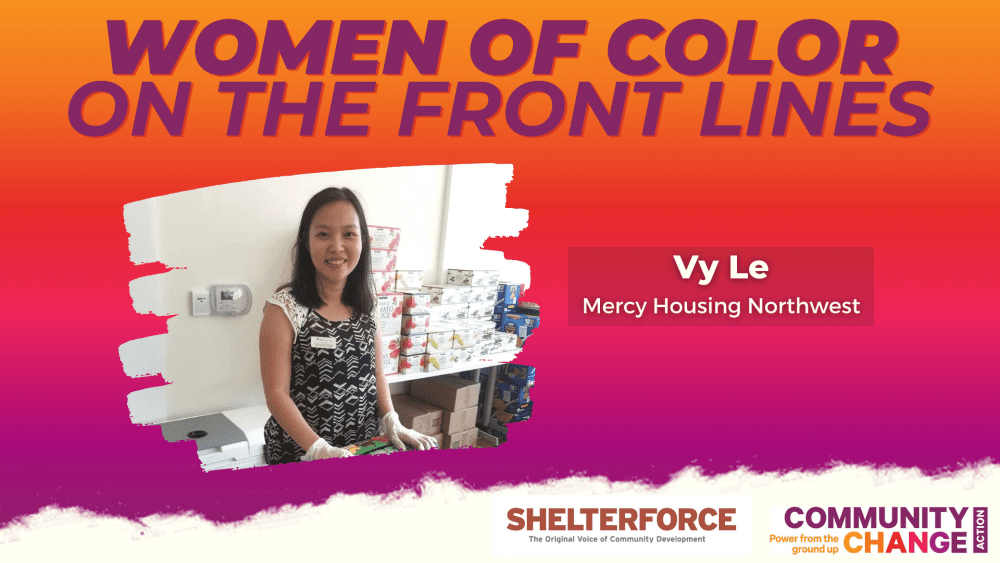“A worker earning the federal minimum wage of $7.25 per hour would need to work 2.8 full time jobs, or approximately 112 hours per week for all 52 weeks of the year, in order to afford a two bedroom apartment at HUD’s Fair Market Rent (FMR).”—Out of Reach 2016.

The easy answer is that there is still an affordable housing crisis and it only seems to be getting worse. As a report, Out of Reach has helped us to document this painful reality for nearly 30 years, but it isn’t just a report. It’s also a tool for advocacy. In the immediate sense, the report puts localized, up-to-date, actionable data about housing needs and wages into the hands of housing advocates at the local, state, and federal levels. In our own case, we specifically use Out of Reach data to advocate for a rebalancing of federal housing policy to ensure that limited resources are targeted to those most in need of assistance. This reflects our mission to achieve socially just public policy that assures people with the lowest incomes have affordable and decent homes. However, our data are also frequently cited by labor advocates seeking to raise the minimum wage. As the report demonstrates, the issue of affordable housing and wages are deeply intertwined. The report can be a tool to build bridges between advocates working on both issues.
Out of Reach is also a tool in the sense that we use it to start conversations about affordable housing, especially with folks who don’t normally think about it. In the 48 hours following the release of the report, we typically hear every argument for and against affordable housing from journalists and their audiences. While it would be easy to simply ignore much of this conversation, that would be a mistake. There is a great deal we can learn from how the media and general public process information about our issue.
Paying close attention to how our information is being interpreted can steer us to new research topics and helps us explain things better in the future. For example, one piece in Forbes responding to Out of Reach 2016 argues that building affordable housing is unnecessary, because we can simply let the private market build more high cost housing that will eventually “filter down” and become affordable to low income households. This filtering argument has received a fair amount of attention this year, especially following the publication of a report by the California Legislative Analyst’s Office. While we disagree with this argument for a number of reasons, the impact of filtering on housing for low income renters is now a topic we’re considering for future research.
Even the comment sections of online publications, though inhabited by an army of trolls, can provide valuable information when approached the right way. If you’re willing to plumb the depths, they can function as informal focus groups. Even if it’s been a bit depressing, looking at the comment sections included with articles about Out of Reach has provided helpful insights into misconceptions and biases held about affordable housing. For example, many commenters appear to equate affordable housing with public housing. Reading through comments also provides some insight into which elements of the report, such as the maps, tend to draw people’s attention.
The findings of the report will not surprise most readers of Rooflines. However, we hope you will consider not just reading, but using the report. Its information we hope everyone in the housing movement can use to expand the conversation about affordable housing, whether it’s with friends, neighbors, members of the media, or decision makers. After all, the true value of our data lies in what we are able to accomplish with it and, as Out of Reach 2016 shows us, there is still much work to be done in ensuring that everyone has a safe, decent, affordable home.
(Photo credit: Stiller Beobatcher, via flickr, CC BY-SA 2.0)





Housing advocates should not belittle arguments for increasing housing production. Many areas of the country have a severe shortage of housing at all income levels. Unsurprisingly, these shortages impact the poor and minorities the most. When housing is in short supply, landlords simply exclude rental voucher holders. Most local ads say “No Sec 8.” When landlords have dozens of applicants for each vacant unit, they can also discriminate against various groups with impunity.
In my county on California’s central coast, the Census reported said that our rental vacancy rate was only 1.7% in 2013. According to HUD’s point-in-time counts, we had more homeless individuals than vacant rental units that year. We also had more people living on the streets than 11 states… combined. In our county of 270,000 people, more than 2,000 were living on the streets each and every night of the year.
Producing more market-rate rental units would be a tremendous help in our county. It would also help in many other areas of California and in other “hot” housing markets. First, more housing would reduce the pressure for rent increases. More landlords would also accept Section 8 and housing discrimination would be harder to hide.
However, increased housing production would never solve our housing crisis. We would also need more housing subsidies. We would need more rental assistance so that lower-income households could afford these new units. We would also need more subsidies to develop permanently affordable rental housing for extremely low- and very low-income individuals and households.
It takes both — more production and more subsidies!